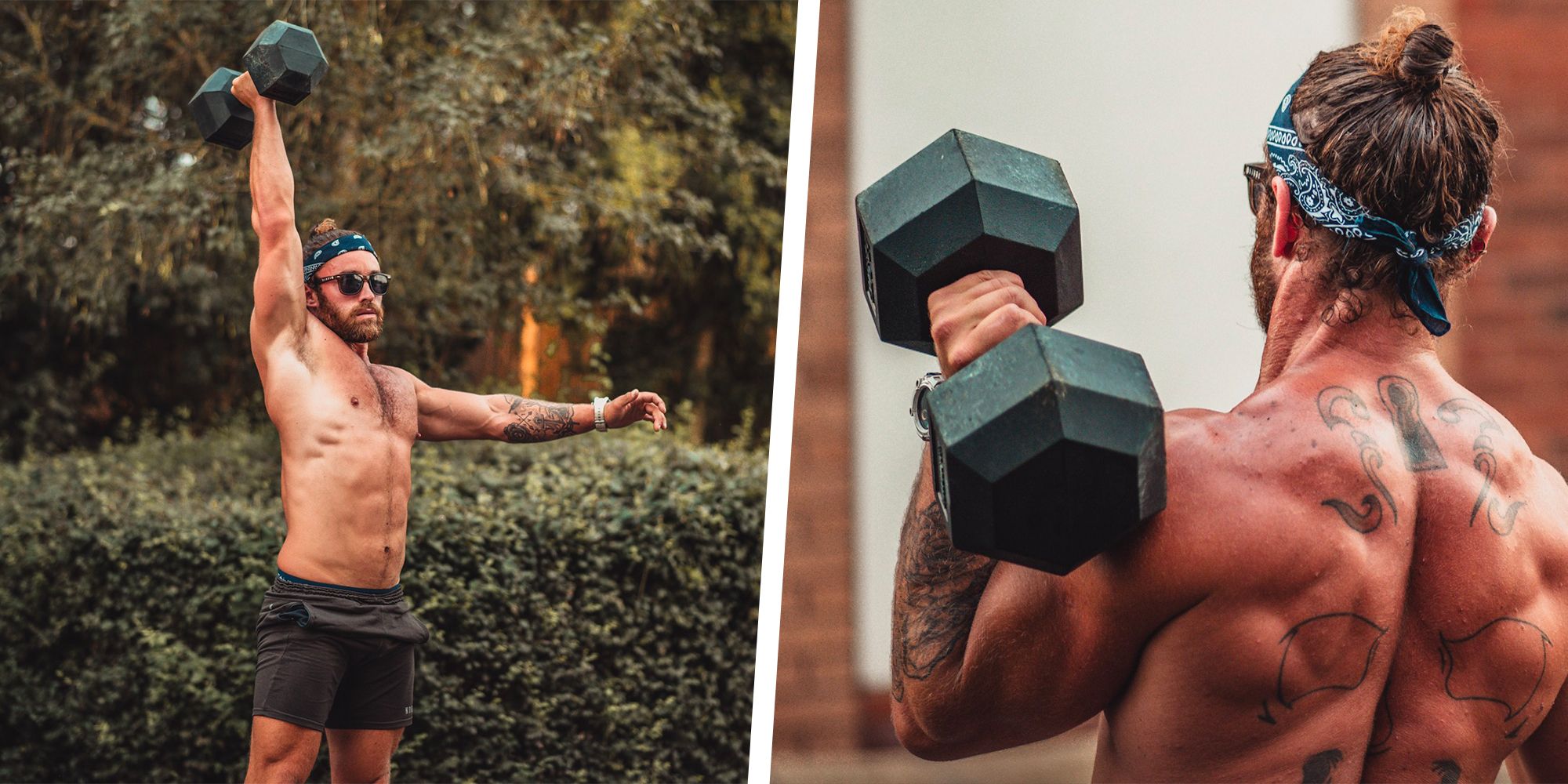Table of Content
Any rotator cuff injury will come to light on this one. Progressive overload is simple, you just want to put more and more stress on your muscles over time. If your workouts are getting easier, you are not employing progressive overload.

Here are 5 of our favourite exercises that will work the different parts of your shoulders and help you to really start seeing those gains. Keeping one arm straight, lower the other weight down to your shoulder and then press it back up again. Raise your arms up and out to the side until they’re parallel to the floor. Keep your palms facing down or point your thumbs upward as preferred. Lower the bar back to your upper chest and repeat. Raise your arms forward and up overhead while simultaneously pushing your arms out to form a V-shape.
Best Shoulder Exercises You Can Do at Home
Much like building a broadened neck, your shoulder span is dependent on the amount of muscle you can build on top of your already existing bone structure. We’re going to dive deep into the 10 best exercises that will beef up your delts, the best ways to project a bigger frame, and some pitfalls to avoid on the road to success. If you are focused on building muscle, the traditional workout will be a better option. The posterior delts are mainly a stabilizer for the above exercises, so while they are worked, they are not going to be a primary mover. Move your shoulder back slightly when your legs reach the top to get a straight handstand position. However, your feet will be elevated on some kind of platform, which makes it less awkward and doesn’t require as much hamstring flexibility.
It’s a very shoulder-friendly exercise and an excellent alternative to barbell, dumbbell, and machine overhead presses. As it’s a standing exercise, you can do it strictly or add a little leg dip and drive to make it a push-press. Landmines are valuable training tools for building functional strength and muscle mass. The landmine lateral raise targets your medial deltoid but takes your arm through a slightly unusual motion to work this muscle in an all-new way. If you’re bored of dumbbell and cable lateral raises, you’ll undoubtedly enjoy this exercise. Of all the deltoids, this is the head most likely to be overdeveloped.
PIKE PUSH UPS
The name comes from the level at which you should have your cable machine set up for this exercise. It’s an excellent way to build up your shoulder strength. Your delts are the star of the show when it comes to building out your shoulder width. Particularly your mid delts are what you want to focus on if you’re trying to broaden your shoulders. They’re split into three sections, the anterior, the posterior, and the medial delts make up the triangle-shaped guardians of your shoulder joint.
Sure, exercise variation is vital for optimal shoulder development, but it must be done intelligently. There are many reasons why someone’s shoulders may not grow, and it is not always simply a matter of not working out hard enough. In some cases, genetics may play a role in why someone’s shoulders do not grow. Additionally, the type of exercise that is done may also be a factor.
Lateral Raise Variations to Add Some Pop to Your Delts
This will help you build muscle and achieve the desired shape. The rear deltoid flye is a great exercise for targeting your posterior deltoids . To do the exercise, stand with a weight in each hand, with your palms facing your thighs. Slowly lift the weights out to your sides, keeping your elbows slightly bent.
But I’d recommend instead splitting the exercises up into at least 2 days throughout the week using an upper/lower split, for example. This allows you to better manage the training volume and frequency. Keeping your back flat and your core engaged, raise your arms straight in front of your chest, palms facing each other. Press the weights directly above your shoulders, and then reverse the movement to return to the starting position. Curl the weights up toward your shoulders, then press them overhead, rotating your hands so your palms face forward as you reach the top of the movement.
Shoulder Workout Routine With Dumbbells
Raise your arm up and out until your hand is roughly shoulder-level. Lower the weight back to your shoulder and repeat. Bend your arms and pull the ends of the handles in toward your face. “Centurion” refers to the 100 kettlebell swings you complete during the workout, and that’s on top of the two other shoulder-focused exercises. For more options, refer to our guide to the best rotator cuff exercises.

Beginners should start with one set per exercise for the first week to reduce the risk of severe muscle soreness. Build up to 3 to 5 sets of 10 to 12 reps of each exercise, and rest between each set. Then an alternative is to perform the same rowing movement but in between the end of a hallway or doorway. Here, you can just grab onto the edges of the walls or doorframe. And you want to pull using the same rowing motion. To make these more difficult over time, simply move your feet forward more to get your body more horizontal to the ground.
Without unracking the bar, grip it with an overhand, slightly wider than shoulder-width grip. Move in close to the bar with your elbows below your hands and the bar resting against your shoulders. Lift the bar up and hold it in your upturned palms. Bend your legs slightly for balance, brace your core, and pull your shoulders down and back.
Everyone is attracted to well-defined shoulders. When it comes to the lats, most lifters already know how to train them for size and strength. Tie a resistance band to a light weight plate – 5-10 pounds should be sufficient. You can also do this exercise seated and using two kettlebells instead of one.





